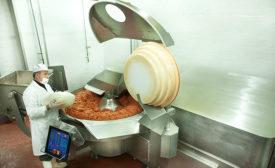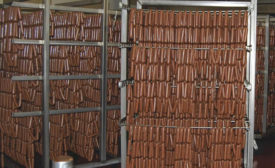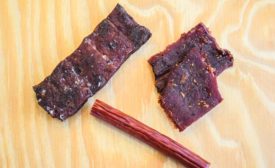Meat and Poultry Processing
Processing Tech
Resource conservation in meat and poultry plants
Meat and poultry processors can reap a multitude of benefits by leveraging technologies and procedures that curb energy and water use.
Read More
Solving cooking deviations for processors
Deviations resulting from failure to meet lethality or stabilization critical control points
Read More
Opportunities in meat snacks
Store shelves are filling up with snack sticks, jerky and meat bars, but there is still an opportunity for processors.
Read More
Processing Tech
Humane innovation in the slaughter process
Increased automation and new stunning technology is creating a more humane slaughter process.
Read More
Meat Science Review
Effect of direct-fed microbial on Enterococci antibiotic resistance
Studying the antibiotic resistance of Enterococcus sp. in cattle feces as impacted by dietary supplementation with Lactobacillus salivarius L28.
Andrea R. English
Alejandro Echeverry
Jhones O. Sarturi
Tosha L. Opheim
Kendra K. Nightingale
Mark Miller
Mindy M. Brashears
January 19, 2018
Stay ahead of the curve. Unlock a dose of cutting-edge insights.
Receive our premium content directly to your inbox.
SIGN-UP TODAYCopyright ©2024. All Rights Reserved BNP Media.
Design, CMS, Hosting & Web Development :: ePublishing











